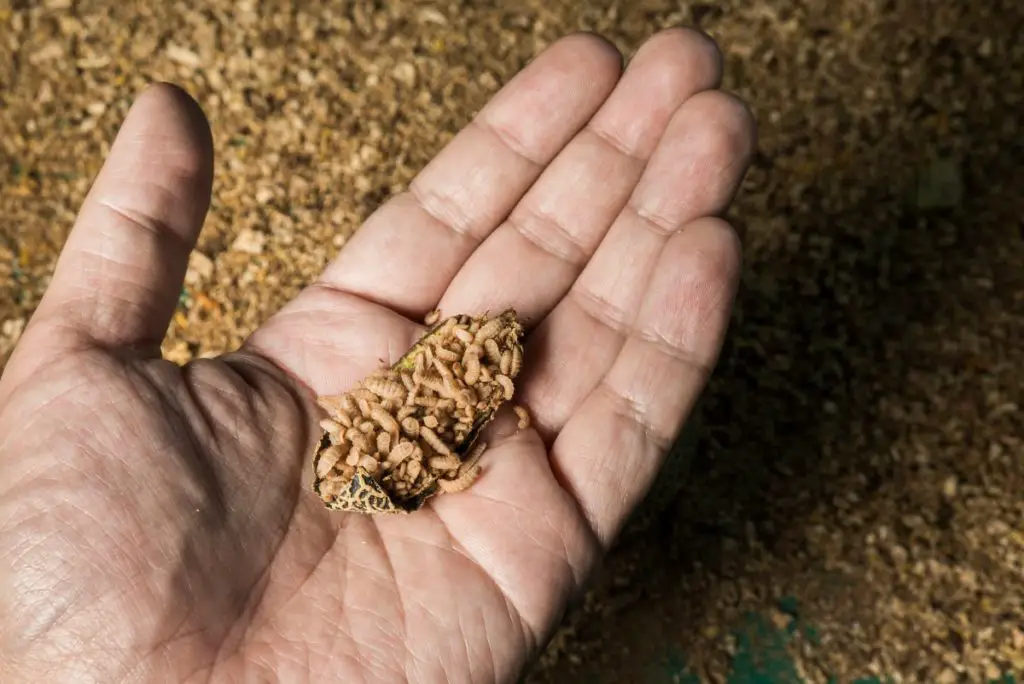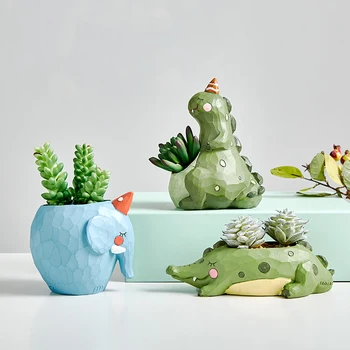The sight of maggots in compost tumbler might freak you out. These creepy crawlers are gross.
But before you shriek, you should know a compost maggot is harmless. These wiggly creatures aren’t entirely bad for your compost heap. They help break down food and quicken the composting process.
Different types of grubs can infest your compost, but the most common is the larvae of Black Soldier Fly (BSF). The scientific name of this fly is Hermetia Illucens. It’s a native Neotropic fly, but you can find it on almost every continent.
These flies don’t invade houses like the common housefly. Instead, they target worm bins, garbage piles, and places with unsanitary conditions.
These black flies grow to about 5/8 inch and resemble the organ pipe mud dauber wasp. Their chubby appearance easily distinguishes them from house flies.
BSF neither bites nor transmitted infections. Adults live for approximately 15 days.
Grubs in your compost come from BSF. These flies are attracted to your organic waste because of free food.
BSF are ferocious fighters and will fight worms, rove beetles, houseflies, and mites to protect their nests.
Compost bins contain lots of food, be it kitchen scraps or animal manure. The food provides an endless supply of nutrients for soldier flies.
The warm, moist environment also creates the perfect breeding environment for these insects.
With that said, not every composter on the block attracts these flies. They appear in composts that have many greens and few browns.
If there’s an imbalance of greens and browns in your tumbler, expect these guys to pop in.
Another cause is improper mixing of your compost. When you fail to turn your yard waste properly with an aerator, it will get oversaturated with moisture. A moist bin creates the ideal environment for compost worms to thrive.
Adult females lay eggs in moist, uncovered compost piles. A female fly can lay between 200-650 eggs at a time. The eggs hatch in about four days, forming larvae that are 0.04 inches in length.
The larvae can grow up to one inch before transforming into the pupal stage. It takes approximately 20 days for this transformation to occur.
The fly’s larva is pretty distinct. It’s chubby and has a gray, white, or brown color. The larva’s color depends on what it eats.

The insect has a torpedo-shaped body filled with hairs/spine. Its head is much smaller and narrower compared to its body. It does not have legs.
Soldier fly larvae are active, rapacious feeders of nitrogen rich material and decaying matter. They eat almost anything, be it kitchen waste or manure.
Professionals use these larvae for BSF farming, worm farms, grub composting, and as animal feed.
But are these maggots good or bad for your compost? Read on to find the answers.
Maggots play a crucial role in the composting process. Their voracious eating capabilities help to break down organic material.
Grubs can prevent your waste heap from stinking. Since they eat quickly, they prevent microbes from breaking down waste and releasing smelly methane gas.
They also secrete chemicals that turn the stinking waste into non-smelling, healthy compost.
Fly larvae also thrive in worm bins. Here, they compete with worms for food. And since they aren’t predators, they won’t feed on the worms.
However, it is understandable many gardeners would still prefer flies and baby maggots to stay away from their compost.
When you have too many maggots, they’re disgusting and deplete your compost.
It’s okay to have maggots in your compost. They are harmless and don’t transmit diseases. Instead, they may convert kitchen waste into fertile soil amendment ready for your garden. You can also feed them to chickens and other pets.
However, it’s understandable if grubs gross you out. The sight of these insects might be sickening.
Pros
Cons
You don’t have to tolerate the sight of maggots in your compost pile. There are a few ways of preventing them from camping in your waste heap.
Lime is an effective ingredient for dealing with fly larvae. Lime accelerates the composting process, and in doing so, reduces the amount of food available to larvae.
One cup of lime suits approximately 25 cubic feet of compost. You have to be very cautious when adding it to compost. Lime can mess up your compost’s pH levels.
Instead of lime, you can opt for citrus food waste or pine needles.
Another natural way of dealing with grubs is adding vinegar to compost. Vinegar kills fly larvae. It may take up to 8 hours for larvae to die after you’ve applied vinegar.
Vinegar also creates an unfavorable environment for larvae and soldier flies. A tablespoon of vinegar should be enough for 20 pounds of waste.
Be careful when adding vinegar. Its acidity can affect the compost’s pH. It may also attract vinegar flies.
Birds, including chickens, love feeding on maggots and soldier flies. Instead of disposing of compost larvae, you can feed them to birds.
The only way grubs get into your compost is when soldier flies lay their eggs. Instead of focusing too much on the larvae, you can find ways of capturing these flies.
A suitable way is hanging several fly traps near the compost. The traps will draw the flies, trap them, and prevent them from laying eggs.
BSF larvae are sensitive to cold environments. When left in the cold, they become sluggish and feed less. You can leave your composter open and expose these maggots to bitter cold nights.
They cannot withstand harsh winter conditions. Black soldier flies are also unlikely to lay their eggs in cold environments.
Nematodes are microscopic multicellular insects that can provide a natural way to rid your compost and garden of pests.
By introducing nematodes into your compost pile, you can rest assured that they’re going to work at killing pests at both the larval and adult stage. Nematodes work by entering the body of pests and releasing symbiotic bacteria that kills them. This bacteria is effective in eliminating pests while still being safe for pets, plants, and humans.
You can also assume the larvae aren’t present in your compost. They are harmless and always work in silence.
If grubs freak you out, you should do everything possible to keep them away from your compost tumbler. Here’s what you should do.
Healthy compost should have a perfect mix of dry, carbon-rich items (browns) and green items.
Avoid adding too much nitrogen-rich material. If you have to add greens, bury them deeply where larvae cannot access them.
Examples of green items include coffee grounds, vegetable waste, tea bags, fresh leaves, and food scraps.
Your compost bin should have enough brown matter. These are things like:
The brown materials should adequately cover greens.
Recommended reading: What Can You Compost?
Don’t pile lawn waste into the compost. Fresh grass clippings attract all kinds of flies, including the Black Soldier Fly.
A better alternative is drying the grass before composting. When adding dry grass, spread it out evenly.
You can ward off soldier flies by putting a window screen over holes in your composter.
This method seals off all the entry points used by flies.
Closed bins are much better at preventing maggot infestation. Flies won’t be able to land inside the tumbler and lay eggs.
However, you have to worry about airflow and moisture build-up in a sealed tumbler. It’s advisable to turn the pile to prevent heat and moisture accumulation.
Meat, bones, fat, and similar products take a long period to decay. What’s worse, they attract flies which end up laying eggs on the pile.
Decaying meat also stinks. You can’t stomach such a smell if the compost is near your house.
No. Although BSF larvae can be white, they are chubby. The tiny white crawlers you see in your composter could be pot worms.
Pot worms feed on any organic matter and thrive in very wet piles. They are helpful in worm composting.
You can get rid of these worms by adjusting your pile’s pH or constantly turning your compost.
Apart from BSF larvae, you may encounter grubs from:
If you like to do composting in your apartment, it’s perfectly fine to have grubs in your compost. They are harmless and might help the decaying process.
However, if you find fly larvae disgusting, you can use the suggested methods to get rid of them. Remember to wear rubber gloves when handling decomposing material.





We provide a platform supported by gardening enthusiasts to share unique experience and knowledge.
We’ve pledged 5% of sales to the program which help more families have opportunity to have garden.
Every action we make has an impact on planet. Learn more about Million Compost Movement.
Join facebook community to connect, share passion and get support when you need.
Keep in mind that we may receive commissions when you click our links and make purchases. However, this does not impact our reviews and comparions. We try our best to keep things fair and balanced, in order to help you make the best choice for you.
As an Amazon Associate, we earn from qualifying purchases.
Sign up for gardening tips, activism awareness, exclusive offers and more!
© Garden Guidepost

Gardening tips, activism awareness, exclusive offers and more!